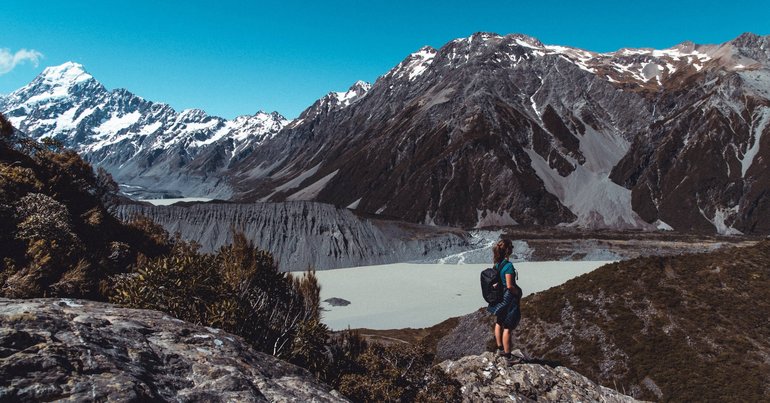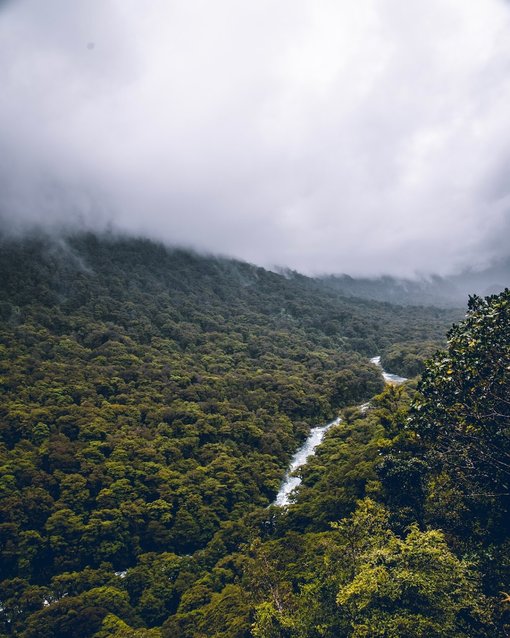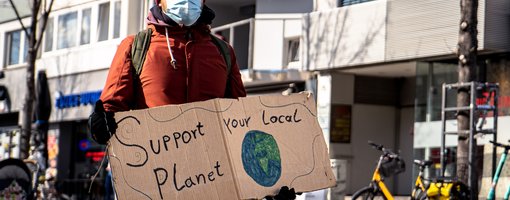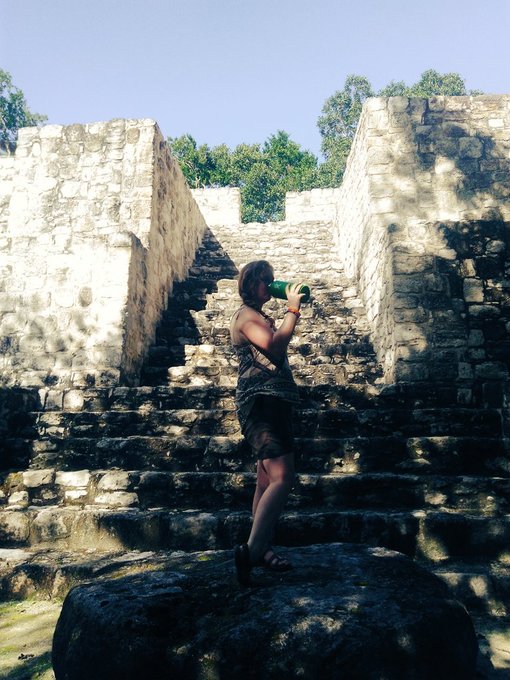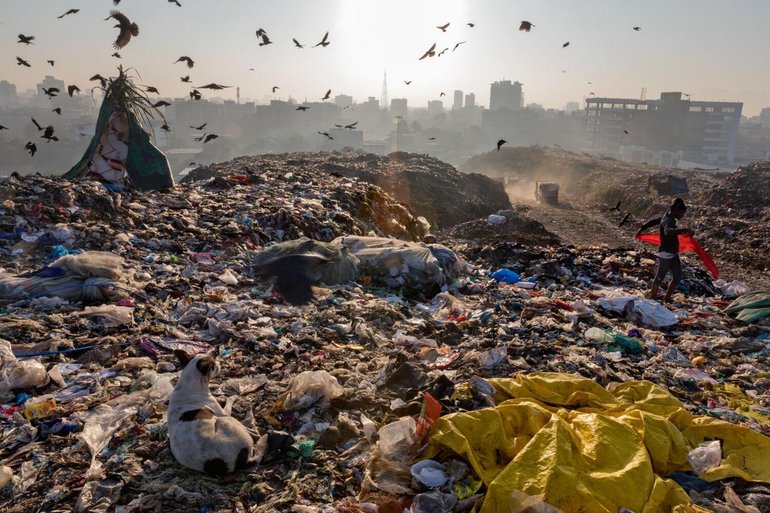
Photo credit: National Geographic
As a responsible travel blog, we want to encourage people to travel more sustainably. A topic of sustainability that you see all across the internet is plastic waste. People all over the globe are taking steps to reduce plastic pollution.
When travelling you are sometimes challenged on how to avoid the use of plastic. However, you don’t have to worry. It is actually quite easy to reduce the use of plastic while travelling. A bit of conscious decision making and some preparation goes a long way.
Eventually, we do believe in plastic-free travelling. However, we also notice that in some countries and during some circumstances you simply can’t get around plastic. For us this also a learning curve and we are still trying to find ways how to get to complete plastic-free travelling. In this blog, we will share 10 tips on the reduction of plastic pollution as a traveller.
1. Take Your Reusable Utensils with You
An easy starter, but definitely an important step. As a traveller, you probably bring a lot of food on the road, eat at little food stalls or explore markets for a bite to eat. Almost all these places will provide you with plastic utensils and containers… which are almost all single-use and will directly end up in landfill or, eventually, in the ocean.
You can easily limit your own plastic waste by bringing a reusable utensil set and plate with you. There are a lot of lightweight options by various gear brands, this is a small effort but definitely a good first step.
2. Bring Your Own Reusable and Portable Coffee Cup/teacup
My favourite moment of the morning is that first cup of coffee or tea. When travelling I also really cherish that little moment in the morning to myself before the day begins. I often find myself at a local coffee place to get a nice strong cup of java.
Since disposable cups are very wasteful and we learned that millions and millions of cups go to landfill each year it’s time to do it differently when you decide to have your coffee or tea to-go. Bring your own portable and reusable coffee cup/teacup and ask the local barista’s to make your hot drink in there. It tastes the same, perhaps even better thinking about your step towards plastic-free travelling.
3. Dine in Instead of Take-Away
Another very easy step to avoid single-use plastic is to dine in instead of taking your food to-go. It does not only save on a lot of disposable plastic products, but it’s also the perfect way to sit down and unwind after a busy day of travelling.
In many countries, dining in is perfectly acceptable. However, in many Asian countries but also some South American and African countries, you will find street food all over the place. Try to go for a sit-down restaurant or find the vendors that don’t use the plastic containers but serve the food in reusable or paper containers.
4. Bring Your Own Food and Snacks on Your Travel Days
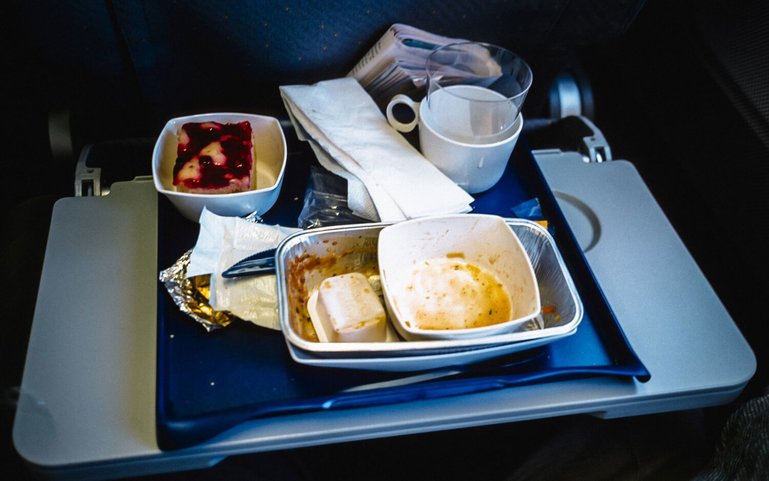
Photo credits: Getty
Airlines are notorious for cabin waste, producing over 6.7 million tons each year. The (bad) food that airlines provide during in-flight services come in unnecessary individual plastic wrapping. Bring your own container filled with some snacks like dried fruit, a muffin or nuts so you got yourself covered.
Ask your flight crew to refill your own reusable bottle instead of bringing you plastic cups over and over again. Don’t forget to ask for a drink without the plastic stirrer. In case you forgot your own bottle, ask the crew to leave your cup with you during the whole flight so you can reuse it.
There are airlines working towards complete plastic-free operations such as Qantas, who aims to remove 100 million single-use plastic products this year, replacing 21 million coffee cups, 45 million plastic cups and 30 million disposable utensils.
5. Skip the Toiletries Provided by Your Accommodation
An increasing number of hotels are starting to move away from individual plastic toiletries like shampoo, conditioner, soap and body lotion. You can find more and more hotels that provide these products in refillable bulk wall dispensers. A good step in the right direction.
However, you can also contribute yourself by bringing your own toiletries. Either you can bring a handy shampoo bar (you can put in a stainless steel container or beeswax) or carry some liquid shampoo, conditioner and soap in reusable soap dispensers. They are super lightweight and a perfect travel gadget.
6. Shop at Local Markets
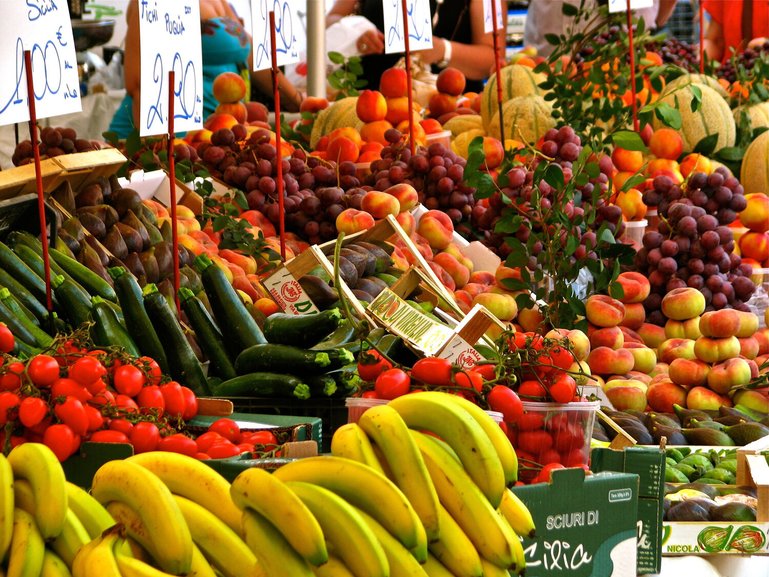
Photo credit: the Isabella Experience
Another notorious plastic producer are supermarkets. You will literally find everything wrapped in plastic and I have even seen supermarkets in Asia where individual nuts were all wrapped in plastic and then also again in a bigger plastic bag. You can imagine the amounts of plastic going to waste there.
You can avoid this by visiting local markets where you can get fresh produce. Bring your own reusable, foldable cotton shopping bag and you are ready to shop.
7. Bring Your Own Food Wrap or Beeswax to Put Your Products In
Reusable, washable and compostable beeswax wrap is the perfect sustainable plastic-free alternative to sandwich bags and plastic wrap. The ideal, light-weight thing to bring on the go.
You can wrap up fruit, vegetables, cookies, cheese, nuts and sandwiches. All the yummy things you will most definitely bring on your travels. You use the warmth of your hands and fingers to soften the beeswax wrap so you can use it right away to cover a bowl, pack a snack or use a placemat.
8. Carry Your Own Reusable Water Bottle
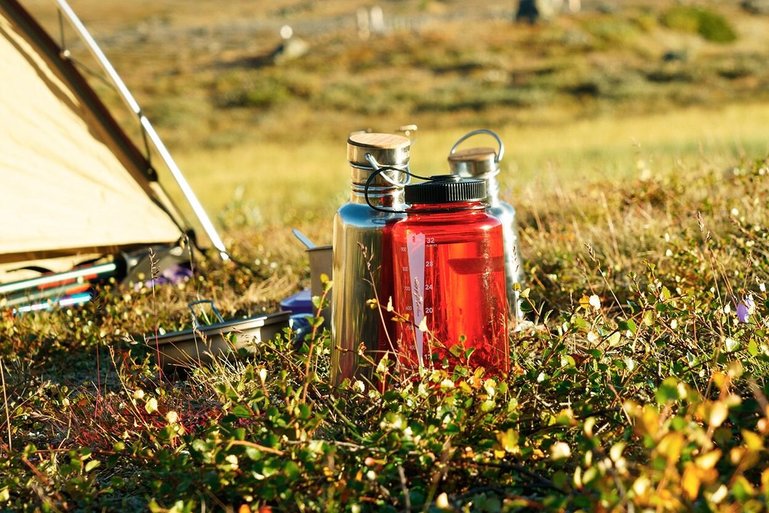
Photo credit: National Geographic
An absolute must when travelling is to carry a reusable water bottle. Bringing a reusable water bottle will save you from buying one plastic water bottle after another. Do good to the environment and your body by staying hydrated on your longs days exploring or travelling around.
There are so many categories and types of water bottles (glass, stainless steel etc.) so it’s you pick one that matches your needs. We like a stainless steel bottle because it really keeps the water cold.
I like to carry at least one 750ml (sometimes even two) bottles and try to fill them up whenever I can: at cafes, water fountains at stations or airports, hotels etc. Obviously, there are many countries where it’s not safe to drink tap water. In tip number 9 I will talk a bit more about water purification and how you can use that in order to still use your own reusable water bottle.
9. Invest a Purification Device for Your Water
You no longer need to rely on plastic bottles when you are visiting a country where there is no clean drinking water. A lot of technological improvement is happening, all great steps towards the ban of plastic drinking bottles.
Today, there are various water purification devices that you can buy, from water purifying tablets, filtration bottles but also a rechargeable SteriPEN which uses ultraviolet rays to kill the bacteria within 90 seconds in your water.
10. Help out At a Local Beach or Wilderness Clean-Up
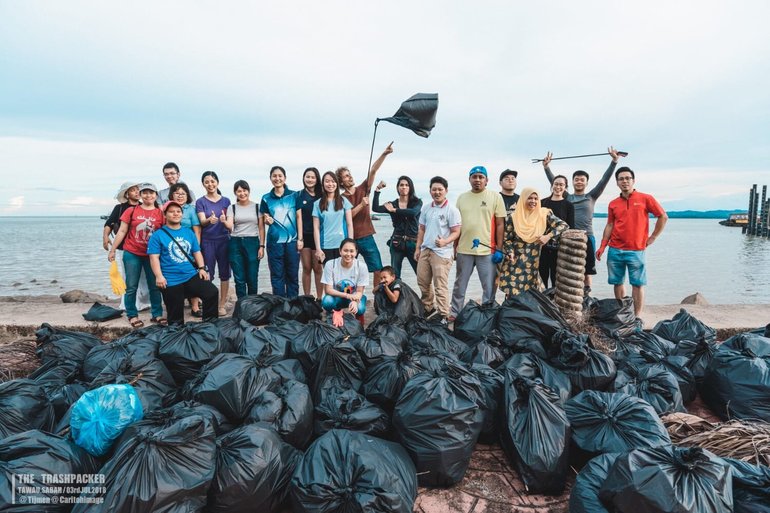
Photo credit: Trashpackers
Last but not least you can help out a local beach or wilderness clean-up to fight against plastic pollution. There are plenty of local hosts that organize these clean-ups. Search Facebook Events or ask around your accommodation for any upcoming clean-up in your destination.
We are big fans of Trashpackers, founded by Dutchie Tijmen Sissing. He started the community as a way to inspire both locals but also backpackers to do something more and to be ‘trashpackers’ instead.
Trashpackers is a community of backpackers helping to clean the world one plastic bag or piece of plastic garbage at a time. Their goal is to collect 100.000 bin bags in one year. You can easily register on the website, join a local clean up or create a cleanup yourself.

